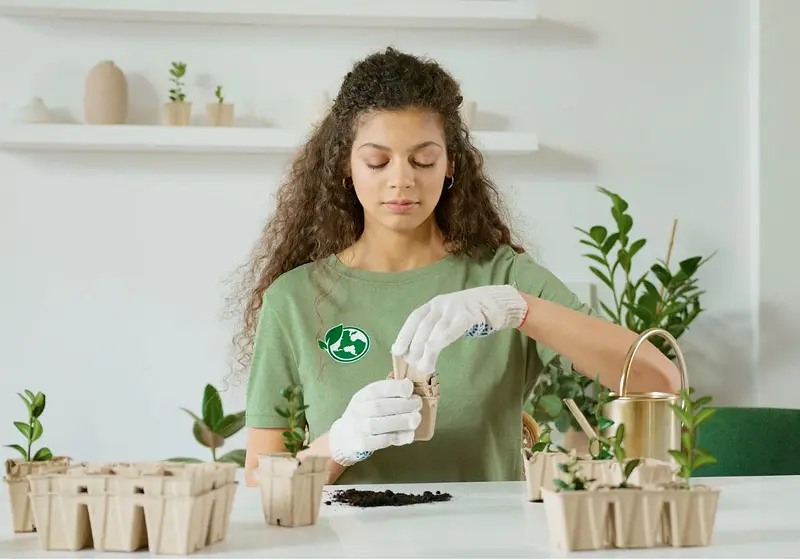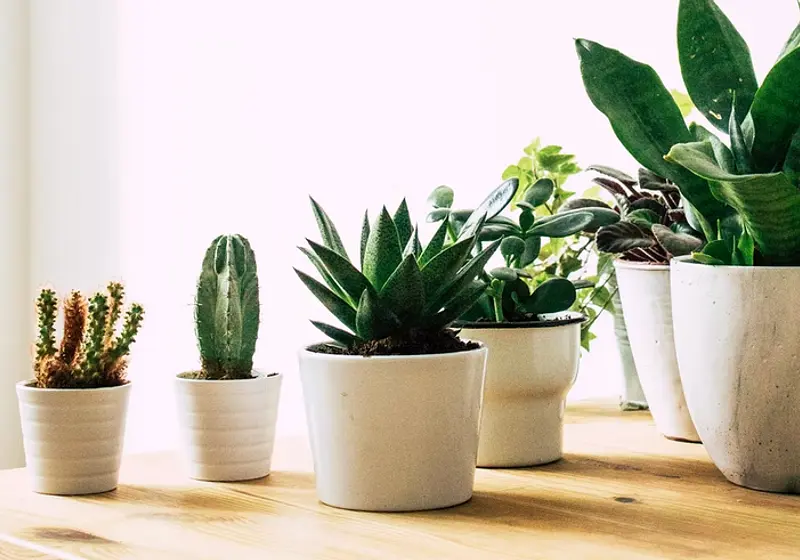Have you ever wished to grow your own plants to decorate your home, but did not know where to start or weren't sure you would be able to keep them alive? Not to worry, since there are many easy-to-grow plants out there.
Not only are plants a great way to embellish your home, but they are also good for your own health and that of your environment. For instance, if you are feeling stressed because school has started and your teacher has already published the prospective dates of your tests, there are many beginner-friendly plants that can help you reduce that stress! Here is a list of easy plants that anyone, green thumb or not, can grow.
Let us slide into your dms 🥰
Get notified of top trending articles like this one every week! (we won't spam you)The Benefits of Houseplants
First, however, the why.
Houseplants, or plants in general, have a wide variety of benefits that will allow you to live a better overall life. Not only can they add a decorative look to your home, which will then boost your mood, but they also reduce your stress and fatigue and boost concentration and creativity. Furthermore, they ensure that you get a good night's sleep and wake up well-rested the next day.

Take the Quiz: What Drama Should You Watch Next?
Take this quiz to find out what K-drama you should watch next!
1. String of Hearts Plant
The string of hearts plant is a great beginner's plant, and it makes for a nice addition to your home due to its distinctive heart-shaped pattern. It is a fast-growing plant that is best hung on your ceiling, since its vines can become quite long once they mature. While its pale magenta flowers can be interesting, they aren't large enough to be very distinctive.
This plant is very tolerant in terms of inexperienced plant growers, since it is known for being robust. It can survive rather long periods of neglect, so if you accidentally forget to water it every once in a while, it will survive.
While it can survive neglect rather well, it does enjoy certain living conditions. Here are a few tips to ensure that it will grow and bloom:
- To ensure that the string of hearts plant can be at its best in terms of growth and flower production, try to place them under bright but filtered sunlight.
- Let the soil dry in between watering periods, and then give the plant a deep watering. However, make sure you drain excess water! Too much can harm them, and might even kill them.
- This plant can survive relatively low temperatures, but be careful not to leave it in the cold for too long.
- Strings of hearts are mostly propagated by stem cutting.
- If your plant survives for a few years, it is recommended to repot it. However, be careful with the vines, as they can break off rather easily!
2. Jade Plant
Jade plants are succulent houseplants that look like miniature trees and are fairly easy to grow. With proper care, they could end up living for years! They are often passed down from generation to generation, and make for a great decoration.
This plant can adapt well to warm and dry places, which can be found in most people's homes. However, they are sensitive to cold weather, so if you live somewhere that often plunges below freezing temperatures, try to make sure to keep it warm inside.
Here are a few tips and tricks to ensure its long life:
- Make sure to keep jade plants watered during spring and summer (the growing season), and drier during winter and fall (the dormant season).
- Let the soil dry in between watering, as too much water can lead the plant to rot.
- Jade plants need at least 6 hours of sunlight.
- Move the plant away from cool windows during winter, as its leaves might fall if it gets too cold.
- By keeping the plant in a smaller pot, you can keep it contained and easy to manage.
If you have any pets, be careful, because this plant is toxic to both cats and dogs!
3. Cactus Plants
The cactus is one of the easiest plants to grow. That's because it only needs occasional waterings, and because it can thrive with a little bit of neglect.
There are many cacti that beginners can choose from— try to do so based on your living environment. For instance, if you have a lot of bright sunlight in your home, then you can go for a desert cactus. On the other hand, if you lack bright light, you can opt for a tropical species.
A few beginner-friendly cacti include rebutia, cereus, hatiora, astrophytum, and pereskia. Whether you choose a tropical or desert specimen, however, try following these tips as you grow your plant:
- Do not overwater your cactus! All cacti are sensitive to water.
- Use an unglazed pot, so that the excess moisture can evaporate.
- A well draining soil can help remove the moisture.
- Reduce watering by half during colder seasons, such as during winter.
4. Monstera Plant
A Monstera plant can be difficult to take on in colder climates, since it is a tropical plant, but don't let that discourage you! You can be very successful with these plants, whether you live in the northern or the southern hemisphere.
Monstera is a very low-maintenance plant. It is flexible when it comes to sunlight, so you will definitely find a place for it in your home. Furthermore, even if you make a mistake, they can be very forgiving and bounce right back!
How to take care of a Monstera:
- This plant prefers indirect and bright sunlight. However, it is quite adaptable to other lighting situations. Just make sure you don't leave it in direct sunlight for too long, or its leaves will burn and become crispy.
- Being a tropical plant, the Monstera loves sitting in soil full of moisture. It needs to be watered quite often, or more specifically, once the top of the soil is dry.
- Try to get your plant a pot that is bigger than its root, since this plant can grow rather quickly!
The Monstera's stems and leaves can be toxic to both pets and humans, so make sure to keep them out of the reach of small children and pets, especially if they are likely to try and eat the stems and leaves.
5. Spider Plant
Spider plants can be one of the easiest and most interesting plants to nurture. Their leaves can grow to very long lengths, often hanging over the edge of the pot, and they can produce other spider plants very easily.
They are also quite adaptable when talking about lighting. That's because they will tolerate being put in places where most plants don't grow. However, they do prefer having bright sunlight.
The needs of a spider plant include:
- Spider plants prefer having their soil slightly moist.
- Try watering it once a week. However, during winter, wait a while longer, such as until the top of the soil is dry.
- Some plants, the spider plant included, can be sensitive to elements found in tap water. So, try to conserve rainwater and use it to water your plants.
- Spider plants enjoy room temperature.
Spider plants can provide numerous benefits. For instance, they improve the indoor air quality, as they tend to absorb harmful elements. While one plant won't make much difference, having multiple will definitely allow you to live a healthier life. That's the great thing about this plant: you won't even need to purchase more than one, since it will produce its own "babies" that you can repot!
When trying out these 5 easy houseplants, you won't have to worry too much about keeping them alive. They are robust and can live even with little neglect. Just try not to make the neglect a habit! Offer your plants the best lives they can have, and they will benefit you enormously in return.









